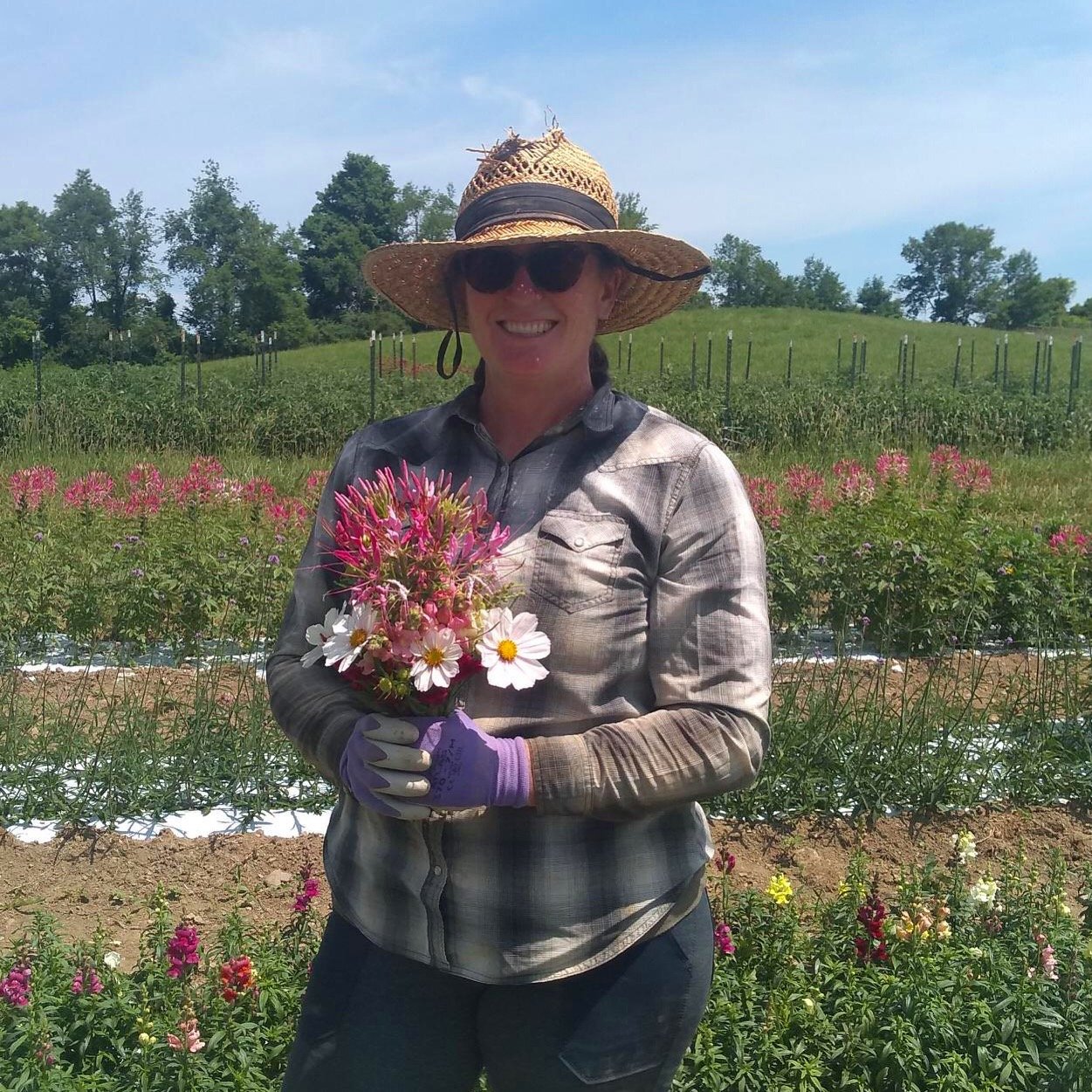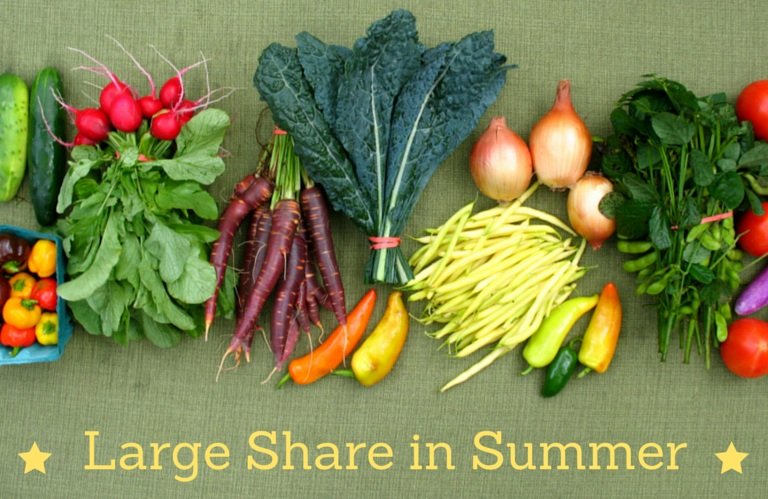Crop Rotation Craziness (or rotations based on the land rather than schedules in books)
/I wanted to name this “Ignoring the (Crop Rotation) Experts,” but that title is way too loaded these days! However, in terms of crop rotation, I increasingly find the rigidity of ideas on how to do it chafing.
This past weekend, I sent in our organic certification application.
A lot of that application is submitting records and forms and attestations and showing how you can trace products from seeds to end sales. I know that there’s lots of talk that organic certification is all bunk and not very uptight, but I can guarantee that our certifier (NOFA-NY) is strict enough there is always a lot of groaning about additional receipts that need to be dug out of the deep files. And by deep files, don’t be thinking it’s a nice organized cabinet in the back office—it’s a set of poorly labeled boxes buried deep in the attic!
One of the challenges for us with our February certification paperwork due date is that you are supposed to know where everything is going to be in the fields for the upcoming season (as in, your crop planning is completely done), and be able to explain your crop rotations.
For non-farmers/gardeners, crop rotation is essentially the idea of shifting what you plant where each year so that you don’t have the same crops in the same place forever.
The advantage of moving stuff around like this is that if your plants get disease or pests ideally those issues will stay in the one spot in the field where you had a problem and not travel to the spot that you plant your crops in the next year.
We don’t worry about crop rotation in our U-Pick flower gardens because there is just such a diverse mix of plant families there to start!
I know a lot of gardeners stress out about this, but IMO (not sure if I count as an expert to ignore here or not) if you have a backyard garden that’s 10 x 10, crop rotation doesn’t matter as much because you’re already planting a small and diverse mix of species, so the issues crop rotation deals with in theory shouldn’t be hitting you too hard. (Exception, if your garden is 100% tomatoes year after year or something similar, you could run into problems and might want to consider diversifying your plantings or starting a rotation of spots).
But when you start planting like we do of beds upon beds of related vegetable species, if you don’t rotate what you grow where, diseases can build up really fast. Plus, as organic farmers we don’t have great pest and disease control options. Yes, there are things that we can spray that are allowed in organic situations, but most of them don’t work very well and cost a lot more than conventional spray options (and you have to apply them way more, so labor costs go up). Our goal with crop rotation is to plant things in a way that we don’t have to spray and that they still stay healthy.
Crop rotation is one of the funny areas in gardening full of super rigid ideas and proscriptions. Unfortunately for the ease of filling out our organic application, our farm’s process is the opposite of rigid.
We have a lot of fields that were supposed to all be the same size and length but they aren’t. Our land has these odd little seeps and hills and gullies and areas of good and bad soil and spots with more or less wind. Over the past decade as we learned about the locations of all of these little non-conforming zones, we’ve tweaked and changed our fields around so now they aren’t uniform, they aren’t mathematically neat in the sense of being easy to crop plan around, and they can be a total hassle for managing materials around (do you cut your row cover to 150 feet or 200 or 285 or 315 feet?).
Up close you can’t tell how annoying irregular the fields are in length! Confession, though, the older we get the more we like the fields like this one that are only 150’ long, cause it’s only 75’ to haul out zucchini! also, this is from 2020, or the last year before we started splitting our crops into smaller plantings that are separated by other crops.
In short, our farm is terribly set up in terms of efficiency or ease of planning. Old school farmers would be quick to point it out, and likely ask why we aren’t growing in that gorgeous six acre lower field where we could have long beds and everything in one space. They are totally right, if you look at farming as a system of rigidly applying straight lines and strict rules onto the earth. And they would also be right in their context of farming—when you are only using the best land, which is uniform, flat, and well drained.
Alas, many first-generation farmers like us now can no longer afford that type of land as it’s also more valuable for houses and big box stores and parking lots. That leaves folks like us farming up in the hills on ground that was long ago abandoned by vegetable growers and left to field crops and cows.
Our soil is still perfectly fine and grows good veggies. But the land was pretty clear to inform us that it would not grow nice vegetables if we imposed a straight line, long row system onto it. We started that way and tried to make it work, before we realized that the effort to maintain consistent 200 foot long beds across the farm was more headache than we wanted. That nice perfect lower field has two diagonal seeps, a water table that backs up from the neighbor’s woods, an excessively healthy deer population, and soil microbial levels that are “100% pathogenic” for vegetable crops (yes, we tested). It does, however, grow some killer hay.
Year Two (2013): little did we know that this field would be one of our problem children… the next year we put it all into strawberries and then it rained so hard the water table submerged them all! Years of cover cropping and chisel plowing have eliminated compaction and it even grew healthy beans and potatoes during the 21.5” of rain in six weeks we saw last summer!
I can still remember the day in year 3 when we were like, “Okay, this field wants to only be 185’ long, and that field wants to be 315’ long.” Making that first change away from the “shoulds” of farm layout felt freakier than it should have. But then came year four when we realized that some of our fields just wanted to be at an angle to the sun, not the neat north-south or east-west of farming, but the messy nonuniform sprawling of geometry that matches the seeps and waterflows and slopes of our farm.
Somedays the current irregular messiness causes us (okay, Matt) to lose our minds—farming with uneven field lengths is a hassle more often than not. But other days, like after we got six inches of rain in a weekend with NO major erosion or washouts last year, it feels like we listened to what the fields told us to do, and are going to come out ahead.
All this tweaking and changing things around has left us pretty loosey goosey on our crop rotations.
If you read a book about gardening or rotations there will be rules like don’t put this in the same spot for three years or don’t put that in the same spot for six years. I know super organized farmers that have (perfectly uniform field blocks and...) 10-year rotation plans written out into eternity. We do not have those.
What we do have instead is almost twice as much space as we need each year so that if a field seems to have a problem or a new challenge we don’t have to use it the next year. Sometimes we skip using a field for two years if we really want it to take a break and get cover crops and build up a good carbon and nitrogen level in the soil.
Opening up a new field way back in 2014! This was the start of having extra fields available to rotate through and rest.
We pretend to plan our crop rotations in February using all our records from past years. We look at what grew where in the past five years, and then look at notes of what went on. Were there any weird diseases? How good did the crops seem? Do any of our resting fields feel particularly lush? We crunch some real data, but also go a lot on vibes of how the cover crop looked in a particular field. We make plans, but we don’t etch them into stone until we get into the fields after the snow in May. (And yes, you read that correctly, for those of you who don’t live at higher elevations in upstate New York we have to assume that there will be snow on the ground through the end of April as least half of the time.)
Even once we get growing for the season, every year we end up making at least one major rotational change due to disease pressure or weather. We’ve literally been almost ready to plant fields and then decided that the soil isn’t going to cut it for various reasons (three of our fields have dry zones that can be a problem in drought seasons, three have wet zones that can flare up in rainy years, and 3 are prone to get funky if there isn’t enough sun or wind). Fortunately, we have the capacity to make these major in-season changes thanks to the joy of having fields just hanging out growing cover crops for fertility that can be quickly conscripted into use!
Are you starting to wonder what our fields look like—this is 2020 before we added “Nova Scotia” field…
Finally, just to make things messier (but also boost plant health and yield), starting in 2021 we began splitting up our crops from growing them in large blocks by planting system or crop family. We started looking at this after the 2018 Alternaria hell year (when that disease wiped out our half acre of fall broccoli, cauliflower, and cabbage). Now, rather than planting 20 or 30 bed wide swaths (so 120 to 180 feet) of one crop, we have six beds of broccoli here and three beds of cauliflower there and three beds of cabbage over there in an attempt to break up even further potential disease cycles. This showed good potential in 2022, but also now means instead of juggling crop rotation through 22 separate planting blocks, we are juggling 72 or so uneven planting areas.
Check back in 2027 to see how it’s working for us for disease control!
And hopefully this helps any farmer reading this to feel less guilt if your rotations get messier than you think they should
And finally, apologies in advance to our poor organic certification inspectors, who will always end up with an extra dose of paperwork shuffling to reflect our rotational changes that pop up between February and summer when they come to do the on-farm inspection!
Some years we let our fall brassicas grow as our winter cover crop, which saves time and seed costs, but also lets there be some rocking late season food for pollinators!




















